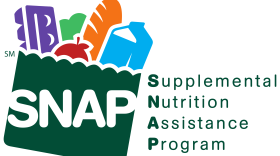The U.S. Senate passed a spending measure late Tuesday night that would put an end to the longest federal government shutdown in history, but Maryland’s food assistance network may be picking up the pieces for months to come.
Since the federal government announced it would not be funding November Supplemental Nutrition Assistance Program (SNAP) benefits, Maryland Food Bank CEO Meg Kimmel says almost 90% of its 800 partners reported an increase in need at their local food pantries.
“Our phones were ringing off the hook. We saw a 300% increase in calls to our front desk. We saw a 175% increase in visits to our website,” Kimmel said. “We're all here working together to do everything we can to move food and other resources into communities and into families.”
States are anticipating the U.S. Supreme Court will issue a ruling on when full SNAP payments can resume, which help close to 680,000 food-insecure Marylanders buy groceries.
In the meantime, the Maryland Department of Human Services announced SNAP recipients who would have usually received their benefits between Nov. 4 and Nov. 12 will have access to roughly half of what they usually receive on Tuesday.
SNAP recipients can use their partial benefits on their normal issuance days based on their last name. A full November SNAP issuance schedule can be found here.
Marylanders are receiving only partial benefits due to Gov. Wes Moore’s announcement last week that the state would be using $62 million in emergency funding to cover half of November SNAP benefits.
Moore allocated the funding after the Trump administration announced it would only fund around 50 percent of this month’s SNAP benefits following a court order, but several back-and-forth appeals have put that money in limbo.
The court decision could become moot as Congress makes progress on ending the shutdown and restoring full SNAP funding, but Kimmel says uncertainty around food security remains.
“If the government does open back up, we're already talking about another shutdown in January. So the seesaw effect is having terrible impacts on families across Maryland,” she said.
Kimmel explains another government shutdown isn’t the only ongoing threat to SNAP.
Changes to the food assistance program under President Donald Trump’s massive tax and spending measure known as the “One, Big Beautiful Bill Act” are imminent in the coming years, including shifting more administrative costs onto states and potentially the cost of benefits.
“Hundreds of thousands of Marylanders potentially will fully lose SNAP benefits over that period of time, and that is a critical and urgent need and something that we need to really do everything we can to address, whether that's continuing to advocate to have those changes reversed or thinking about how are we going to resource that need,” she said.
While Kimmel prepares for those program changes, she also raises concerns over federal food orders being received on-time in Maryland due to the current government shutdown.
Close to 13% of the food that the Maryland Food Bank distributes comes from a U.S. Department of Agriculture (USDA) Program known as The Emergency Food Assistance Program (TEFAP), which provides no-cost food assistance to low-income families.
Kimmel says the food bank places TEFAP food orders months in advance.
“We are concerned that in the January to March timeframe, it's possible that because of the shutdown those TEFAP orders won't have been placed or processed and that that program could also see a disruption.”
Maryland is also seeing disproportional economic impacts from the government shutdown due to its large federal workforce.
As of June, the Office of the Maryland Comptroller estimates close to 230,000 Marylanders are employed by the federal government, while another 200,000 or so work as federal contractors.
The state has announced a variety of financial resources for furloughed workers and essential employees working without a paycheck, but Kimmel says impacted federal workers and SNAP beneficiaries likely won’t rebound quickly.
“Even before the government shutdown resulted in a loss of SNAP benefits, we were already seeing food insecurity at historic high levels, and that included furloughed workers,” she said. “It's going to take time for families to recover and get back up on their feet after this disruption… These are folks who don't have a lot of money in reserve most likely and are really living [a] combination of paycheck to paycheck and also relying on those critical government benefits. So the loss of them is going to create a ripple effect for families — an economic ripple effect for some time.”
Kimmel says Maryland Food Bank has received its portion of $10 million in emergency food aid the state announced almost two weeks ago, and it has begun distributing the funding to food pantries and assistance programs statewide.









